Edison, NJ Pollen and Allergy Report for Summer 2023
Pollen Allergy Trends in Edison, NJ
When is pollen lowest in Edison, NJ?

February
Lowest month total PPM
Avg. PPM
When is pollen highest in Edison, NJ?

April
Highest month total PPM
Avg. PPM
How does pollen in Edison, NJ compare to New Jersey?
Edison has a higher average PPM than the state of New Jersey.
Edison yearly avg PPM:
New Jersey yearly avg PPM:
How does pollen in Edison, NJ compare to the USA?
Edison has a higher average PPM than the USA.
Edison yearly avg PPM:
USA yearly avg PPM:
Is pollen worse this year in Edison, NJ?
Spring 2023 was worse than spring 2022.
Spring 2023 PPM:
Spring 2022 PPM:
Average PPM in Edison, NJ

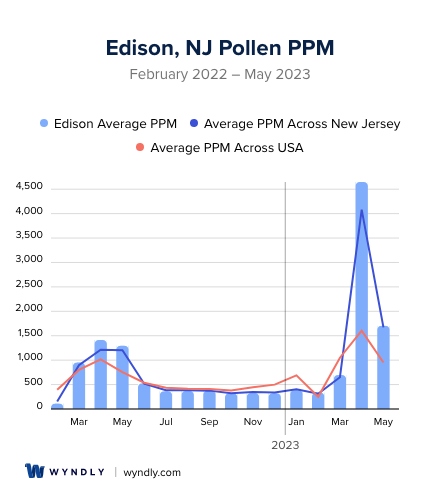
Edison, NJ Pollen and Allergy Breakdown by Month
Grass
When is grass pollen highest in Edison, NJ?
April has the highest grass pollen in Edison, NJ with an average PPM of
When is grass pollen lowest in Edison, NJ?
December has the lowest grass pollen in Edison, NJ with an average PPM of
Tree
When is tree pollen highest in Edison, NJ?
April has the highest tree pollen in Edison, NJ with an average PPM of
When is tree pollen lowest in Edison, NJ?
January has the lowest tree pollen in Edison, NJ with an average PPM of
Weed
When is weed pollen highest in Edison, NJ?
April has the highest weed pollen in Edison, NJ with an average PPM of
When is weed pollen lowest in Edison, NJ?
February has the lowest weed pollen in Edison, NJ with an average PPM of
Edison, NJ Pollen Monthly Breakdown by Pollen Type
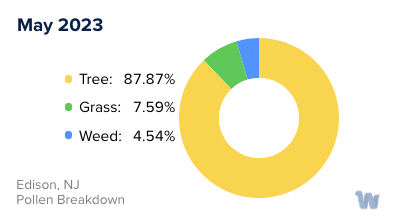
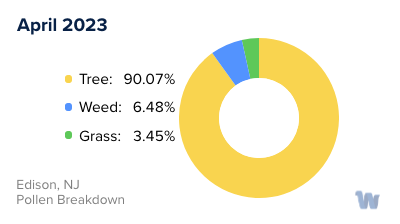
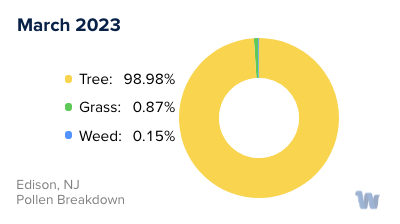
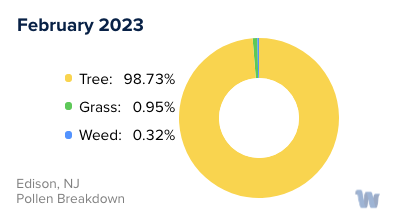
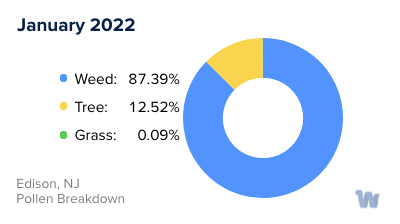
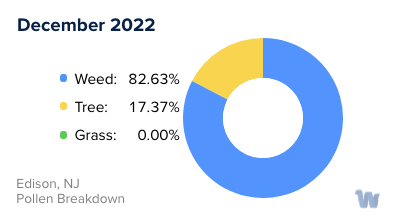
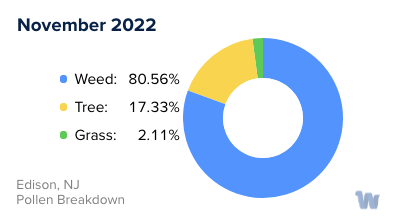
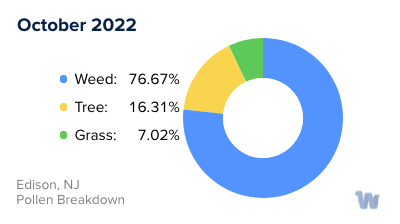
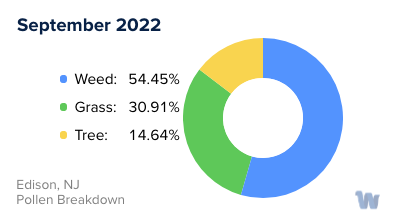
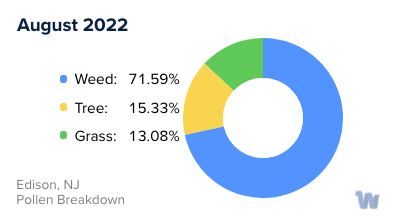
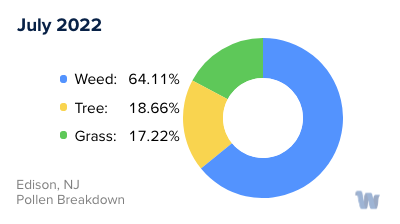
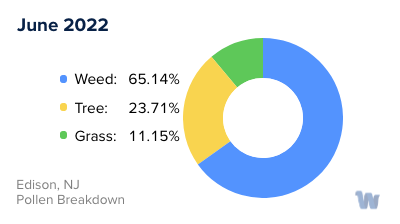
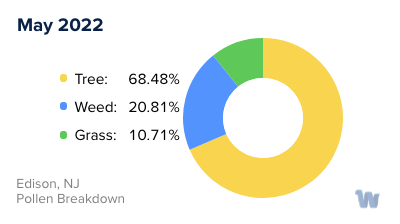

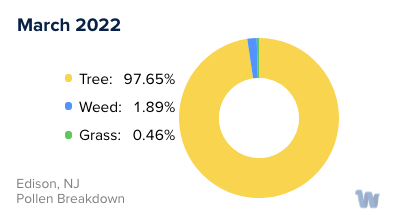
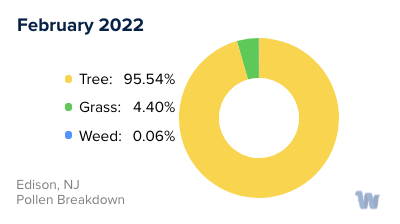
Pollen and Hay Fever in Edison, NJ
Living in the vibrant town of Edison, New Jersey, you might be familiar with the seasonal discomforts brought about by pollen allergies, more commonly known as hay fever. Understanding the specifics of pollen types and the respective seasons they dominate can be instrumental in managing your day-to-day activities during these periods.
There are three main types of pollen that can trigger allergies: tree pollen, grass pollen, and weed pollen. Each has its own season when it is most prevalent.
Tree pollen, for instance, is the main culprit during springtime. Trees like oak, hickory, ash, walnut, cedar, and mulberry are particularly notorious for producing pollen that causes allergic reactions. As the winter chill eases into milder temperatures, you can expect to start experiencing the effects of tree pollen as early as mid-February.
As we move into the summer months, grass pollen takes center stage. Types of grasses common in Edison that produce allergenic pollen include Timothy grass, bent grass, sweet vernal grass, and orchard grass. You'll want to pay close attention to pollen counts in April, May, and June when grass pollen reaches its peak.
Weed pollen, with ragweed being a common offender, dominates the scene in the fall, more specifically from late summer through the end of the allergy season. This type of pollen, along with others from plants like lamb’s quarter, wormwood, and orache, can cause the typical symptoms of hay fever such as runny nose, sneezing, and itchy eyes.
In addition to these, September is another month when pollen counts typically peak, and as such, it would be prudent to limit time spent outdoors during these peak pollen months. You might also consider planning outdoor activities for the evening when pollen counts tend to be lower.
By understanding these pollen types and their seasons, residents of Edison can better anticipate the ebb and flow of hay fever symptoms throughout the year and plan their activities accordingly. Remember, knowledge is your best defense when it comes to managing allergies.

